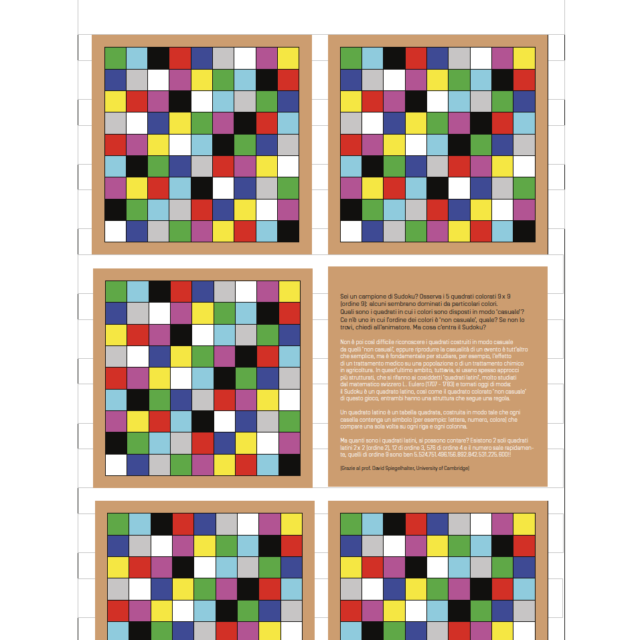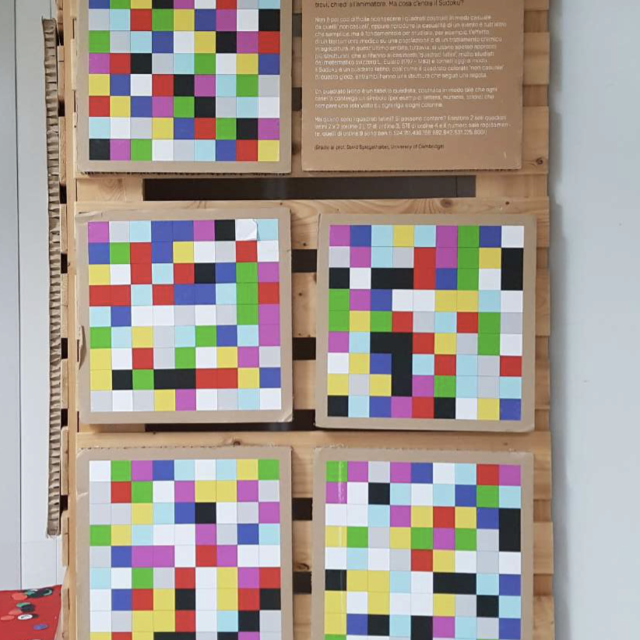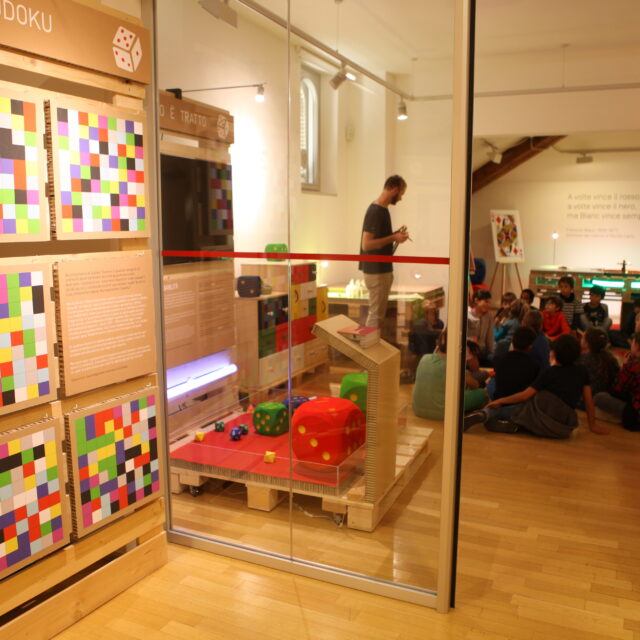Are you a Sudoku champion? All the colored panels in this post were generated by randomly placing the nine colors in the 9×9 grid except for one of the panels (the one in the upper right) which is deterministic (one color per row, per column, per diagonal and in the 3×3 sub-squares).
But what does this have to do with Sudoku? Sudoku is a Latin square, as is the ‘non-random’ colored square in this game, both of which have a structure that follows a rule. A Latin square is a square table, constructed so that each square contains a symbol (for example: letter, number, color) that appears only once on each row and each column.
How to play



The explainer asks the visitor to observe the colored 9×9 squares (order 9): some seem to be dominated by particular colors. Which are the squares in which the colors are arranged ‘randomly’? There is one in which the order of colors is ‘not random’, which one? If you can’t find it, ask the animator.
It is not that difficult to recognize randomly constructed squares from ‘non-random’ ones, yet reproducing the randomness of an event is far from simple, but it is essential to study, for example, the effect of a medical treatment on a population or a chemical treatment in agriculture. In the latter area, however, more structured approaches are often used, drawing on the so-called ‘Latin squares,’ much studied by the Swiss mathematician L. Euler (1707 – 1783) and back in fashion today
But how many Latin squares can be counted? There are only 2 x 2 (order 2) Latin squares, 12 of order 3, 576 of order 4, and the number rises rapidly, those of order 9 are as many as 5,524,751,496,156,892,842,531,225,600!!!
(Thanks to Prof. David Spiegelhalter, University of Cambridge)
This exhibit can be accompanied by the “magic” game of guessing which of two sequences of heads and crosses in a thought experiment and an actual coin toss 10 times is the “made-up” one. Have the visitor write down the two sequences on a sheet of paper in an order chosen by the visitor, and then the animator guesses which is the actual sequence (i.e., obtained from the actual coin toss) and which was invented instead. In the actual toss, there are more likely to be sequences of 3 or more equal sides of the coin.
How to build
EXHIBIT MATERIAL DIN VERSION
- Vertical thin pallets 100×215 cm
- no. 5 Sudoku panels on printed
cardboard 45×45 cm - Titles panel cardboard 100×20 cm
- Printed cardboard explanation
panel 45×45 cm for Colorsudoku.
DOWNLOAD PRINT-READY .PDF FILES:
